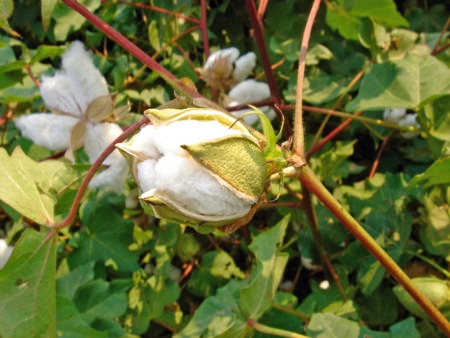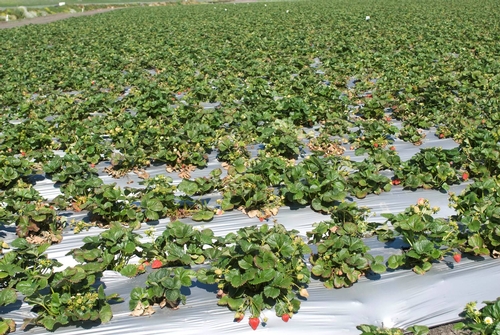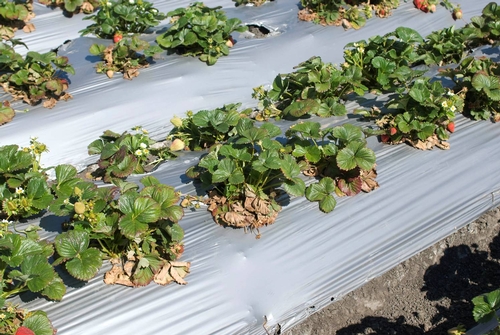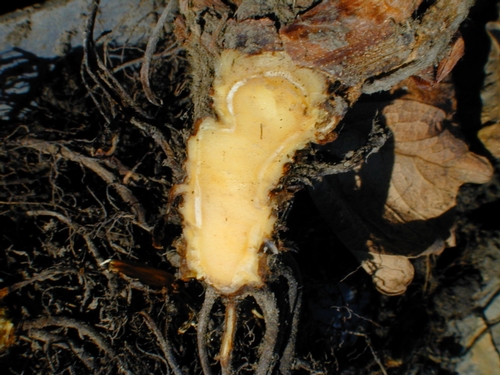
Posts Tagged: Verticillium wilt
Pest threats 'overblown'

The board agreed to revisit the 2008 regulation that prevents cotton growers from planting in the same field three years in a row if the level of verticillium wilt is detected in 3 percent or more of the crop.
Doug Munier, farm advisor for University of California Cooperative Extension, said verticillium dahliae exists in native valley soils and is spread by movement.
"Verticillium was a minor problem with cotton was first planted in the mid-1990s and it is still a minor problem after 17 years of production," he said.
New bee threat more media hype than reality
Wayne Anderson, The Washington Times
Government officials, leading bee experts and average beekeepers around the country say the strange discovery of a deadly bee parasite fly that makes honeybees act "zombie-like" is not seen nationwide — but only in a recently published San Francisco State University study. And some even question the veracity of the discovery itself.
The parasite fly is a long-time resident of California and a known nemesis to other bugs besides honeybees, the article said.
“They’ve been known to infest or parasitize bumblebees for some time all over the country,” said Eric Mussen, California State bee specialist and professor at the University of California, Davis. “It’s not new. We’re aware of it. I don’t believe it’s a terribly important thing to honeybees as a whole.”
Verticillium wilt showing up in Watsonville-Salinas strawberry fields
In the past two weeks, growers have been reporting strawberry field situations in which plants are not growing well, are falling behind in size and production, and are showing symptoms of collapse. Initially the older leaves lose their normal bright green color and begin to turn a dull gray green. These leaves later wilt, collapse, and become brown and dry. Early in disease development, the wilting leaves often occur only on one side of the plant. Without exception, the dead and dying foliage is restricted to the outer, older parts of crowns and the inner younger leaves remain symptomless. Examination of the plants showed that roots were normal and not diseased. The internal crown tissue is likewise healthy in appearance and not discolored. In affected fields, symptomatic plants are randomly scattered throughout large sections of the planting.
Plants submitted to the UC Cooperative Extension diagnostic lab (supported in part by the California Strawberry Commission) were tested for a wide range of pathogens. All such samples tested positive for the Verticillium wilt pathogen (Verticillium dahliae) and were negative for Macrophomina, Fusarium, or other pathogens.
The confirmation of Verticillium wilt is, of course, a major concern for growers. Presently the only effective management options are to rotate and plant strawberry in locations that do not have infested soils and/or to fumigate with effective materials. Because V. dahliae can survive in the soil for many years, even in the absence of a plant host, the disease is a long-term concern for growers. A major concern is that as our industry moves away from methyl bromide-chloropicrin pre-plant fumigation, these Verticillium wilt situations may become more common.
The Verticillium pathogen survives in the soil by producing microscopic, resilient resting structures called microsclerotia. Because microsclerotia are in the soil, growers should be reminded that the movement of significant amounts of infested soil (via mud clinging to equipment and vehicles or by in-field disking) will move the pathogen to uninfested locations. Researchers also find that microsclerotia can be found in high numbers in old strawberry crop residues. Note that the strain of V. dahliae that infects strawberry can infect other plants such as lettuce.

Photo Courtesy Steven Koike, UCCE. Overview of infested field.

Photo Courtesy Steven Koike, UCCE. Close up of infected plants.

Photo Courtesy Steven Koike, UCCE. Note wilting pattern of Verticilluim infected plant.

Photo Courtesy Thomas Flewell. Note how healthy the internal crown tissue appears, yet the plant was very much collapsed.
Scientists perplexed by verticillium wilt in lettuce
UC scientists in the Salinas Valley are trying to figure out why certain varieties of lettuce became susceptible in the 1990s to the fungus that causes verticillium wilt and how the fungus is getting into the soil.
"This is one of the more important diseases facing growers in the county," the Salinas Californian quoted UC Cooperative Extension farm advisor Steve Koike. "It has a significant impact and is increasing each year."
Strawberry crops have long suffered from the disease, but lettuce was immune. Strawberry fields are often fumigated to kill fungi, other soil-borne pests and weed seeds, however, the value of the lettuce crop doesn't justify fumigation and methyl bromide, the primary fumigant, is being phased out.
Lettuce farmers must look for other ways to manage fungus-contaminated fields, Koike told reporter Melissae Fellet. Growers can plant crops immune to the fungus, such as broccoli, cauliflower or celery, or they can plant fungus-resistant lettuce varieties.
The scientists, initially mystified about the source of the fungus, recently discovered that spinach seeds from Denmark, Holland, New Zealand and Washington state have been carrying the fungus into Salinas Valley fields, where it persists in the soil for years.
USDA awarded the researchers a $1.5 million grant to investigate how the fungus is transferred from the seeds to lettuce. UC Davis plant pathologist Krishna Subbarao, who is headquartered at the USDA research station in Salinas, is the principal investigator.

Lettuce with verticillium wilt.
